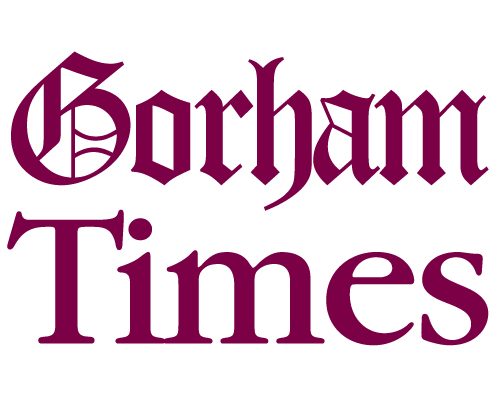There were three large construction projects and several smaller ones undertaken in Gorham this summer impacting almost every state highway in town and travel for most of its residents as well as the summer tourists. Have you ever wondered why these projects were being done when you’ve noticed other roads with bigger potholes or old crumbling asphalt? Well, there are many reasons. One is diminishing returns.
“There comes a point when a road is beyond needing maintenance and needs major repairs or reconstruction. In this case repaving wouldn’t be a good use of limited funds. Therefore the town may choose to implement routine maintenance to an aging
but not yet failing road over tackling one with more obvious disrepair,” explained Bob Burns, Gorham Public Works Director/Town Engineer.
Another reason is the type of road. There are several types of roads that have different construction standards and maintenance oversight. In Gorham, we have state highways and town roads. In general, The Maine Department of Transportation (MDOT) is responsible for all state highways and the Gorham Public Works Department is responsible for town roads, but there is some overlap of duties. There is an agreement called the State Urban Compact between the state and the towns that outlines maintenance/repair agreements for all our roads where they overlap.
“You may have noticed small diamond shaped black and white signs on the side of the road, these mark areas of state roads that the town is responsible for,” said Burns.
Both MDOT and the Public Works staff are are running “windshield surveys,” driving around the town to monitor and record the state of our roads, bridges and traffic to determine not only what needs to be done but to prioritize the work. Both use the latest software to analyze the data collected, create proposals, and then run it by their governing boards for final approvals.
The state has a system to prioritize roads based on the amount of traffic which is a major factor used in determining which highways to work on each year.
“We assign priority numbers to roads. A Priority 1 road would be something like Route 1. The lowest rank is Priority 6. Route 114 is either a Priority 2 or 3 road depending on your exact location. Route 25 ranks as a Priority 1 or 2 corridor through Gorham. Based on the traffic data, Routes 114 and 25 are among the most important state roads in Gorham,” said Paul Merrill, MDOT Public Information Officer.
Although the town and state have their own methods, priorities and budget, they often work hand in hand for a common goal.
“MDOT notifies towns of their project list to Public Works or Town Managers. Then, at town meetings, they are discussed and compared to the town’s priorities to see if synergies exist. Occasionally the town may request a joint effort to achieve multiple goals as in the Route 25 project currently underway,” Burns said.
It would have been hard to miss the Route 25 project this summer. In June, Shaw Brothers Construction of Gorham began the joint project of extensive paving work along five miles of Route 25 (Main Street) from Conant St. in Westbrook to Cressey Rd in Gorham. This project that MDOT initiated includes improvements to traffic signals per request of the town, drainage and water mains, as well as safety features. It is projected to be completed by August 2020.
And finally, one of the reasons your road may not have been fixed yet may just be the budget. There are 149 miles of roads to maintain and only so much money.
“The town has made a concentrated effort to rebuild some failing roads over the last several years but funding is limited and we need to maintain those roads in good condition to prevent them from needing to be rebuilt,” Burns admitted.
Therefore, though oftentimes you may shake your head in wonder as to why a given project is being undertaken, rest assured that there are many variables that may not be readily apparent taken into consideration in the final decision.


